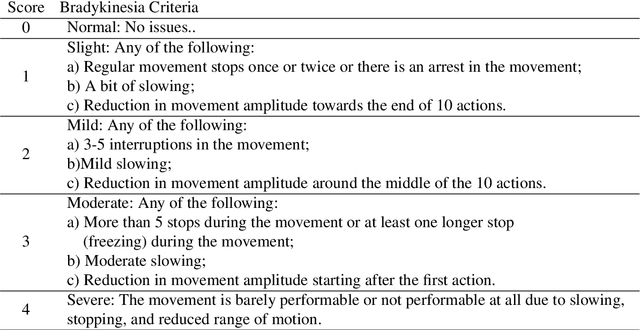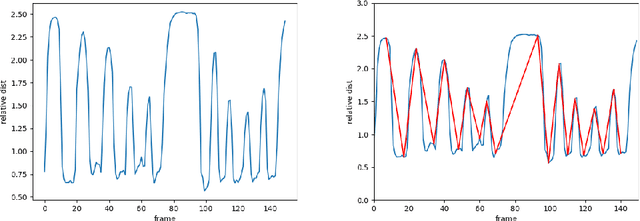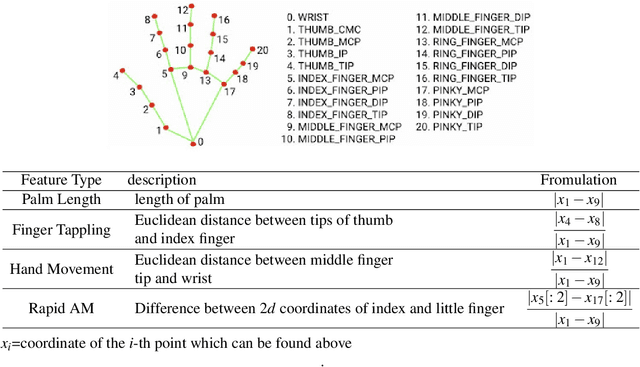Dohyeon Kim
Statistical Analysis by Semiparametric Additive Regression and LSTM-FCN Based Hierarchical Classification for Computer Vision Quantification of Parkinsonian Bradykinesia
Mar 31, 2024



Abstract:Bradykinesia, characterized by involuntary slowing or decrement of movement, is a fundamental symptom of Parkinson's Disease (PD) and is vital for its clinical diagnosis. Despite various methodologies explored to quantify bradykinesia, computer vision-based approaches have shown promising results. However, these methods often fall short in adequately addressing key bradykinesia characteristics in repetitive limb movements: "occasional arrest" and "decrement in amplitude." This research advances vision-based quantification of bradykinesia by introducing nuanced numerical analysis to capture decrement in amplitudes and employing a simple deep learning technique, LSTM-FCN, for precise classification of occasional arrests. Our approach structures the classification process hierarchically, tailoring it to the unique dynamics of bradykinesia in PD. Statistical analysis of the extracted features, including those representing arrest and fatigue, has demonstrated their statistical significance in most cases. This finding underscores the importance of considering "occasional arrest" and "decrement in amplitude" in bradykinesia quantification of limb movement. Our enhanced diagnostic tool has been rigorously tested on an extensive dataset comprising 1396 motion videos from 310 PD patients, achieving an accuracy of 80.3%. The results confirm the robustness and reliability of our method.
A Reliable, Self-Adaptive Face Identification Framework via Lyapunov Optimization
Sep 02, 2021
Abstract:Realtime face identification (FID) from a video feed is highly computation-intensive, and may exhaust computation resources if performed on a device with a limited amount of resources (e.g., a mobile device). In general, FID performs better when images are sampled at a higher rate, minimizing false negatives. However, performing it at an overwhelmingly high rate exposes the system to the risk of a queue overflow that hampers the system's reliability. This paper proposes a novel, queue-aware FID framework that adapts the sampling rate to maximize the FID performance while avoiding a queue overflow by implementing the Lyapunov optimization. A preliminary evaluation via a trace-based simulation confirms the effectiveness of the framework.
 Add to Chrome
Add to Chrome Add to Firefox
Add to Firefox Add to Edge
Add to Edge